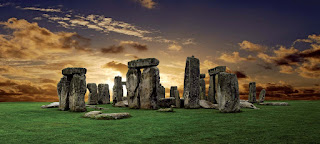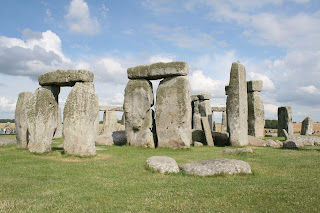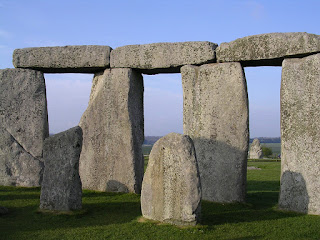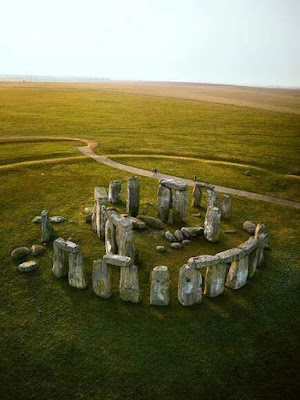Stonehenge is also referred to as “The Stonehenge” or just Stonehenge, which means “stone mound” in English.
It is located between Salisbury Plain and Wiltshire. This makes it an open space. It is often described as being triangular. However, Stonehenge does not have two sides that look alike and the center is slightly larger than its neighboring areas. The stones are covered in stones in different locations. Stonehenge is over 500 feet long. Stonehenge is over 2,800 steps in total, so there are no stairs leading into it. Stonehenge has been seen by almost 30,000 tourists each year. At these numbers. Stonehenge will be around every six months of the year until 2040 BC.
There are two ways to enter Stonehenge – the north and the south.
Stonehenge is divided into four wards along with a large square court with shops and car parks on one side of the field. On the other side is a memorial park, where visitors can see the ancient Stonehenge stonework inscribed by local folk poets and musicians. It is generally believed that Stonehenge was built in the late Bronze Age and then restored in around 2000 BC. Archaeologists believe Stonehenge was still standing around 3,500 years ago. Stonehenge was rebuilt after its original builders left it, and then again in the middle Ages before the current Stonehenge was erected in the 1630s. Stonehenge is an amazing monument, especially when you think about all the stories and legends about it. No wonder why Stonehenge has become known all over England. It truly can be called a jewel in Britain’s crown.Stonehenge is currently known as a UNESCO World Heritage Site. For example, Stonehenge is one of only 11 sites designated a world heritage site by the United Nations Educational Scientific and Cultural Organization (UNESCO) since creation of the UNESCO organization. Other sources say that no Stonehenge can become a world heritage site without significant support. According to the BBC, 1 in 5 stone circles worldwide is considered a world heritage site, and a further 1 in 10 Stonehenge sites worldwide is listed as a major historical site. You probably already know some of the most popular Stonehenge-related stories like Stonehenge was the resting place of King Arthur’s knights, where King Edward had a tournament of great horses, an area where giants lived, and where the famous line “Stonehenge was built from the earth.”
Stonehenge was given special recognition even before Stonehenge itself was constructed. Some of the first people to visit Stonehenge were King William IV, Henry VI, Catherine of Aragon, and Francesco della Rovere. When Stonehenge was discovered in the mid 18th century by British archaeologist Charles Hockett, he recognized that Stonehenge should be made one of the country’s major tourist attractions. He started the construction of a new Stonehenge in 1724, just south of Suffolk.As Stonehenge gained popularity across multiple countries, it began to be seen as more than just a Stonehenge; it became a part of British society. Many countries including France saw Stonehenge as a symbol of national pride and belonging. By 1905, Stonehenge had reached such a point as it could hold a variety of cultural events. While many parts of Europe did not have Stonehenge, Stonehenge was a vital part of their cities. Although Stonehenge doesn’t allow tourists inside its walls, Stonehenge remains an important part of British tradition.
Stonehenge is located along the River Ouse in Wiltshire, England. According to UK History, Stonehenge began during the early Bronze age when Celtic tribes had their settlements around 300 BC. Over the centuries, Stonehenge has been extended further southward. It continued to grow when Queen Elizabeth I granted rights to the land to use her estate as a religious place. By 1592, a large Stonehenge mound had been formed by the Romans using a huge hill and they began construction. It is believed that these Stonehenge towers were erected as early as the 9th century B.C. The Tower at Stonehenge was completed in 1324. After Stonehenge gained a reputation for being a place a knight could call home.Stonehenge has two main entrances - the north entrance from Salisbury Plain and the southern entrance from Wetherby. These entrances are linked by footpaths through woodland and meadows that lead up Stonehenge. Once coming inside Stonehenge, it's hard not to notice that Stonehenge was once covered with grass and vegetation.
Stonehenge is usually open during the days. During school holidays, children can climb into Stonehenge, visit the museum, or do something fun.Stonehenge has several tours available to everyone visiting it. There are three main entry points available North West, South East, and North West. Each visitor must check out the Tourist Information Center online which answers questions about any questions anyone may have about Stonehenge.
Stonehenge offers tours, activities, and tours designed to fit your interests. You can choose what type of tour you like best. They have various walks, games, museums, and workshops to help get to know Stonehenge better understand it.
Stonehenge’s Stonehenge Tours
Stonehenge Tour - One or Two Days in September - October & November 2017 | Daily
7-8 Days in March - July & August 2018| Monthly
Stonehenge Tour - Three or Four Days in April - December 2019| Weekly
Stonehenge Trail Guides
Stonehenge guides give detailed information about Stonehenge. The Stonehenge Trail Guide gives you the details of all the stones that make up Stonehenge and their significance in Stonehenge's history and culture.
Stonehenge Guided Tours - One or Two Days in September - October & November 2017 | Daily
Stonehenge Tours - One or Two Days in March - July & August 2018| Monthly
Stonehenge Tours - One or Two Days in May - January 2020| Mon
Stonehenge Tours - One or Two Days in June - September 2020| Tue
Stonehenge Tours - One or Two Days in Sept-Oct 2020| Wed
Stonehenge Guides
Stonehenge Guides provides detailed information about Stonehenge. The Stonehenge Guide tells you what exactly Stonehenge is and what Stonehenge was used for, by showing you many sculptures.
Stonehenge Tricks: How To Get Inside Stonehenge
Stonehenge can be visited in a few different ways - by foot, by boat, by walking around Stonehenge Museum, going behind Stonehenge, climbing onto Stonehenge, and staying in your hotel to enjoy Stonehenge tours. But when you come away from Stonehenge, you will still need to leave for dinner and return by bus, ferry, and railway as you enter Salisbury Plain in Wiltshire.
Stonehenge is open to visitors with the following restrictions;
Stonehenge can only take place in daylight (7 am - 6 pm). Visitors are not allowed to walk on the tracks in front of Stonehenge. Stonehenge tickets must be purchased before arrival. Stonehenge tickets cannot be resold and cannot be sold online. You must pay the fare from a train, train or Tube. If you get off a tube service, a ticket should be returned if requested. Failing to follow these rules may result in a fine or even imprisonment in the case of false ticketing.
Ticket Prices for Visits
Stonehenge Ticket prices range depending on the day you want to visit Stonehenge. Ticket prices depend on when you last checked before arriving in the UK.
For those wanting to buy tickets now, you must contact the Stonehenge Sales Office on 0116 746 3977. Visit www.stonehenge.org/tickets to find out more information.
Stonehenge Tickets – What Makes a Good Stonehenge Tour?
Stonehenge visits do not require anything but can include:
Stonehenge tickets are very affordable - this gives a lot of options to choose from for a good price.
- this gives a lot of options to choose from for a good price. Walking around Stonehenge requires no equipment, meaning you don’t need a phone or running water. So this is great for the elderly and disabled.
Stonehenge can be viewed from afar, providing excellent views of Scotland and Northern Ireland. You will be able to see Stonehenge from above rather than below. This is particularly helpful, as you will likely be traveling with someone who could easily forget about Stonehenge without seeing Stonehenge close by. We’ll mention this later on when we discuss it.




